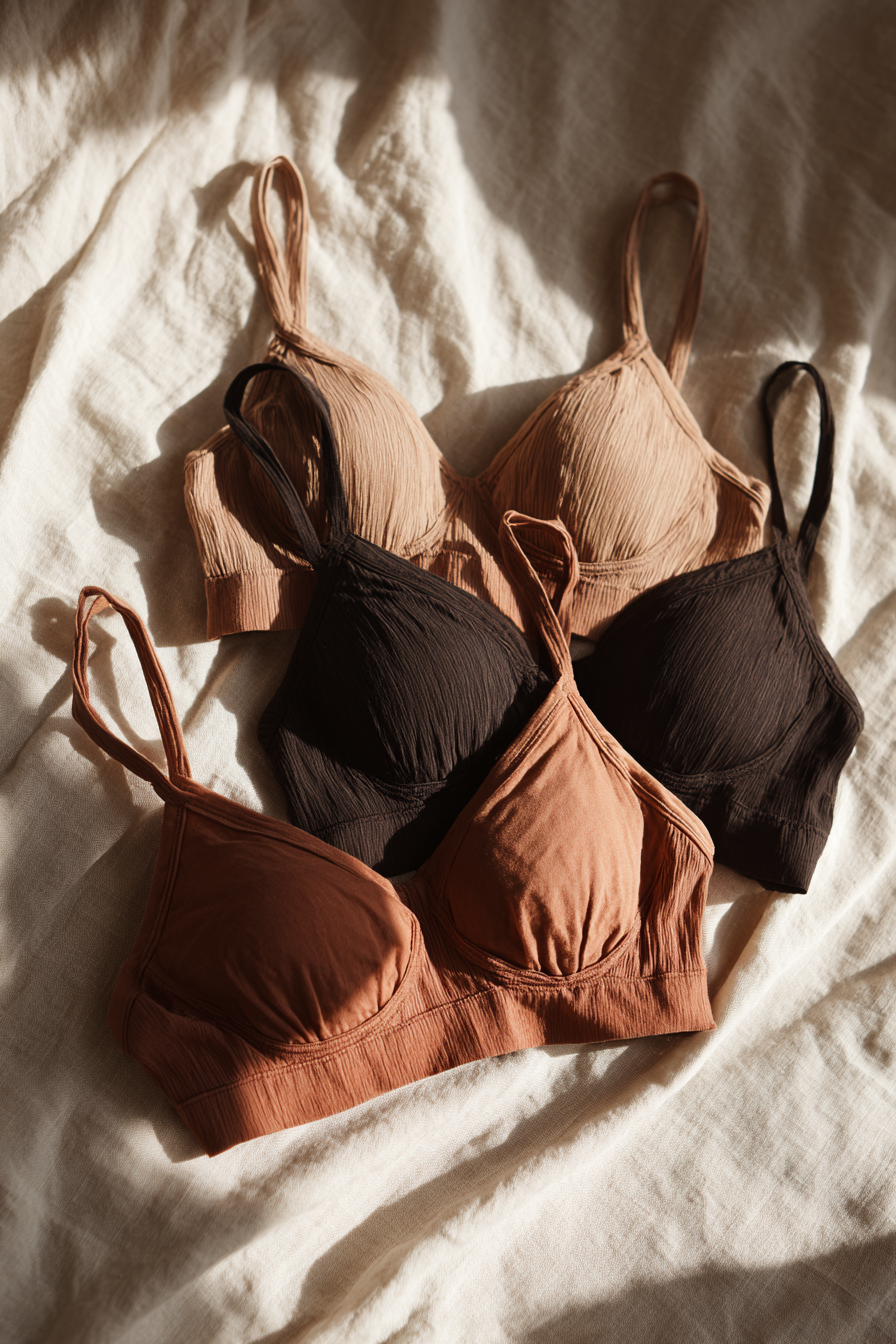
If you’ve ever picked up a new bra and found yourself staring at a tiny tag packed with numbers, percentages, and mysterious acronyms, you’re not alone. The world of lingerie labels can be confusing—even for seasoned shoppers. But learning how to read a bra label can change the way you shop forever, helping you avoid irritating fabrics, spot trustworthy certifications, and make healthier, more sustainable choices.
Let’s break down exactly what’s on that label and how to use this information to find bras that are truly safe, comfortable, and aligned with your values.
What Does a Bra Label Actually Tell You?
Bra labels pack a surprising amount of information into a tiny space. At first glance, you’ll usually see a cluster of numbers and words that might look like this:
- 95% Cotton, 5% Spandex
- Made in Portugal
- RN 123456
- OEKO-TEX® Standard 100
- Care instructions (wash cold, lay flat, do not bleach)
Each part of this label is a clue. Understanding what they mean can help you avoid uncomfortable or even unhealthy bras—and ensure you’re getting the quality you’re paying for.
Here’s a quick overview of what’s usually included:
- Fiber Content: What the bra is made from, listed by percentage.
- Country of Origin: Where it was manufactured.
- Registration or Certification Numbers: These often link to specific certifications or batch tracking.
- Care Instructions: How to wash and dry the bra for best longevity.
- Certifications: Badges like OEKO-TEX® or GOTS, indicating the product meets safety or environmental standards.
Let’s dig deeper into each of these sections.
Understanding Fabric Content: Decoding the Blend
The fabric breakdown is the first thing to check—because it tells you what will actually be touching your skin.
Common bra fabric components:
- Cotton: Soft, breathable, often used in “natural” or “skin-friendly” bras.
- Organic Cotton: Cotton grown without pesticides—look for “GOTS certified” for extra assurance.
- Bamboo: Sometimes labeled as “viscose from bamboo,” it’s soft and moisture-wicking but check for responsible processing.
- Modal or TENCEL™: Soft, plant-based fibers that feel like silk but breathe well.
- Polyester/Nylon: Common synthetics; add stretch and durability but can trap heat or trigger irritation in some.
- Spandex/Elastane/Lycra: The “stretch” ingredient. Usually 2–10% of the fabric content.
What Do the Percentages Mean?
If you see 95% cotton, 5% spandex on a label, it means the main material is cotton (good for breathability), with just enough spandex for stretch and shape. A label that lists 80% nylon, 20% elastane is mostly synthetic, which might mean more stretch, but potentially less breathability or more skin reactivity.
Pro tip: For those with sensitive skin or allergies, look for bras where the highest percentage is a natural fiber (cotton, bamboo, TENCEL), and as little synthetic as possible.
Bra Certifications: What to Look For and What They Mean
Not every label will have a certification, but if you care about chemicals, sustainability, or just want to avoid “fast fashion,” these matter.
Common Certifications and What They Guarantee
OEKO-TEX® Standard 100
- What it means: The product has been tested for over 100 harmful substances (including formaldehyde, heavy metals, and azo dyes).
- How to spot: “OEKO-TEX® Standard 100” badge or printed on the tag. You can verify the certification number on the official OEKO-TEX® site.
- Why it matters: Ensures the finished garment is safe for direct skin contact—even for babies.
GOTS (Global Organic Textile Standard)
- What it means: The entire process, from organic cotton farming to dyeing and finishing, meets strict environmental and social criteria.
- How to spot: “GOTS Certified” or the green logo. You can look up the certificate number here.
- Why it matters: Guarantees organic status and responsible manufacturing.
Other Certifications
- Fair Trade: Ensures ethical labor practices.
- Bluesign®: Focuses on safe chemicals and sustainable production, mostly in performance fabrics.
Label Red Flags to Watch For
- No certification listed: Not a dealbreaker, but less transparency.
- “Natural” without specifics: “Natural” isn’t regulated. Look for actual fiber names and percentages.
- Vague blends: If the label just says “exclusive of trim,” or doesn’t specify percentages, be cautious.
How to Shop for a Safer, More Comfortable Bra
Here’s what to look for (and avoid) on the label next time you’re shopping:
Look For:
- High percentages of organic cotton, bamboo, or TENCEL™
- OEKO-TEX® or GOTS certification badges
- Clear, specific fabric breakdowns (“95% cotton, 5% spandex”)
- Made in reputable countries with strong labor laws
Avoid:
- Bras that are mostly polyester or nylon (especially for sensitive skin)
- Unspecified “foam” padding—could contain unknown chemicals
- Heavy synthetic lace in contact areas (often causes chafing)
- Strong chemical smells (a sign of poor dye quality)
Shopping checklist:
- Is the main fabric a natural fiber?
- Are certifications present and verifiable?
- Are care instructions clear and realistic (hand-wash only can be a hassle)?
- Does the brand explain their materials on their website?
FAQs: Bra Labels and Safe Materials
What does 95% cotton 5% spandex mean?
It means your bra is mostly made of cotton (comfortable and breathable), with a small amount of spandex for stretch. This is usually a good blend for everyday wear.
How can I tell if a bra is non-toxic?
Look for certifications like OEKO-TEX® or GOTS. Avoid bras with strong odors, vague blends, or unverified dyes. Research the brand’s website for transparency about materials and sourcing.
Is a higher percentage of synthetic always bad?
Not always—some synthetics (like TENCEL™) are skin-safe and eco-friendly if certified. But for those with allergies or irritation, natural fibers are usually better.
Do certifications expire?
Yes, certifications are usually valid for one year. Check the certification number if you’re unsure.
Can I trust “Made in…” labels?
Country of origin can tell you about likely labor practices, but it doesn’t guarantee fabric safety. Always look for third-party certifications for peace of mind.
Final Takeaways: Becoming a Smarter Bra Shopper
Decoding a bra label may seem overwhelming at first, but it’s one of the best ways to make healthier, more comfortable, and more sustainable choices for your body.
Remember:
- Prioritize high percentages of natural fibers.
- Trust third-party certifications over vague marketing.
- Look for brands that are transparent about their process and happy to answer questions.
- When in doubt, research the certification number or reach out to customer support.
When you know how to read a bra label, you empower yourself to make better decisions for your skin, your health, and the planet.


